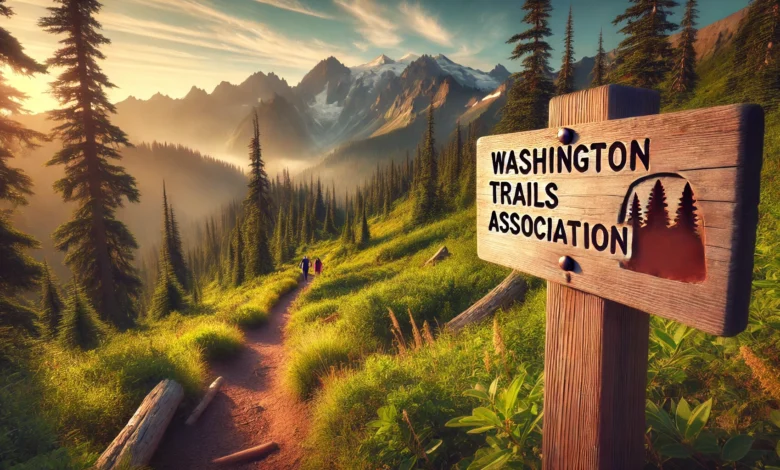Washington Trails Association: Exploring and Preserving Washington’s Natural Beauty

Introduction to Washington Trails Association (WTA)
Washington Trails Association (WTA) is one of the most respected organizations dedicated to preserving and promoting hiking trails across Washington State. Whether you’re an avid hiker, a weekend explorer, or someone who simply enjoys the great outdoors, WTA plays a crucial role in ensuring that trails remain accessible, safe, and well-maintained.
Through advocacy, volunteer work, and Washington Trails Association community engagement, WTA not only keeps trails in top condition but also educates the public on responsible outdoor recreation. In this article, we’ll dive deep into what WTA does, why it’s important, and how you can get involved in their mission to protect Washington’s scenic landscapes.
The History and Mission of WTA
WTA was founded in 1966 as a newsletter for outdoor enthusiasts, but it quickly evolved into a powerful organization advocating for the preservation of hiking trails. Over the years, WTA has grown into a network of thousands of volunteers, working tirelessly to maintain trails and ensure public access to Washington’s most breathtaking outdoor destinations.
1. Mission and Core Values
The main mission of WTA is to protect and Washington Trails Association enhance hiking opportunities in Washington. Their core values revolve around:
- Trail Maintenance: Keeping trails safe and accessible for all hikers.
- Education and Awareness: Teaching responsible outdoor practices.
- Advocacy: Ensuring that public lands remain open and protected.
- Community Building: Connecting outdoor enthusiasts through shared experiences.
2. Growth Over the Years
Since its inception, WTA has expanded its efforts across the entire state. From maintaining backcountry trails in the Cascade Mountains to preserving Washington Trails Association urban pathways near Seattle, the association has significantly impacted Washington’s outdoor landscape.
Trail Maintenance and Volunteer Programs

One of WTA’s most valuable Washington Trails Association contributions is its volunteer-driven trail maintenance program. Every year, thousands of volunteers contribute their time to repairing trails, clearing fallen trees, and improving Washington Trails Association infrastructure.
1. How Trail Maintenance Works
WTA organizes work parties where volunteers, led by Washington Trails Association experienced crew leaders, perform essential trail repairs. Common tasks include:
- Removing obstacles like fallen logs and rocks.
- Repairing eroded paths and reinforcing trail edges.
- Building and maintaining footbridges and steps.
These efforts are vital in keeping trails safe and enjoyable for hikers of all skill levels.
2. Who Can Volunteer?
The best part about WTA’s volunteer program is that Washington Trails Association anyone can participate! Whether you’re a seasoned hiker or someone with little experience, there’s always work to be done. WTA provides the necessary training and tools, Washington Trails Association making it easy for newcomers to get involved.
3. Impact of Volunteer Work
Every year, WTA volunteers log over 100,000 hours of trail maintenance work. This dedication has helped restore some of Washington’s most beloved trails, ensuring they remain open for generations to come.
WTA’s Hiking Resources and Trail Reports
WTA is also a valuable resource for hikers, providing detailed trail reports, guides, and recommendations through its website and mobile app.
1. Trail Reports and Reviews
Before heading out on a hike, many Washingtonians turn to WTA’s website to check recent trail reports. These reports provide:
- Current trail conditions.
- Weather updates.
- Warnings about obstacles like fallen trees or washed-out sections.
Hikers can contribute their own trail reports, helping keep the community informed and prepared.
2. Hiking Guides and Recommendations
For those new to hiking or looking for inspiration, WTA offers comprehensive guides to trails across Washington. Whether you’re searching for a family-friendly walk, a challenging mountain ascent, or a scenic waterfall trek, WTA has you covered.
3. Hiking Safety and Ethics
WTA promotes responsible hiking through initiatives like Leave No Trace, encouraging visitors to respect nature and minimize their impact on the environment. Key principles include:
- Packing out all trash.
- Staying on designated trails.
- Respecting wildlife and fellow hikers.
Advocacy and Conservation Efforts
Beyond maintaining trails, WTA is a strong advocate for public lands and environmental conservation.
1. Fighting for Public Land Access
WTA works with lawmakers, land managers, and local communities to ensure that hiking trails remain open and well-funded. They actively campaign against policies that threaten public access to natural areas.
2. Protecting Washington’s Wilderness
Through various conservation projects, WTA helps preserve fragile ecosystems, ensuring that future generations can enjoy the same natural beauty that exists today.
3. Encouraging Sustainable Recreation
As more people discover hiking, WTA emphasizes the importance of sustainable recreation. This includes limiting human impact on sensitive environments, promoting carpooling to trailheads, and supporting responsible land-use policies.
How You Can Get Involved
WTA thrives because of its dedicated community of hikers, volunteers, and supporters. If you’re passionate about the outdoors, there are several ways you can contribute.
1. Join a Volunteer Work Party
Spending a day working on trails is a rewarding experience. It’s a great way to meet like-minded people while giving back to the hiking community.
2. Donate or Become a Member
WTA is a non-profit organization that relies on donations to fund its projects. Becoming a member helps support trail maintenance, advocacy efforts, and educational programs.
3. Submit Trail Reports
Hikers can contribute by sharing their experiences and trail conditions on the WTA website. This helps others plan safe and enjoyable hikes.
4. Advocate for Public Lands
Stay informed about policies affecting Washington’s trails and take action by contacting local representatives or participating in advocacy campaigns.
Conclusion
The Washington Trails Association is more than just a hiking organization—it’s a movement dedicated to preserving Washington’s outdoor treasures. Through trail maintenance, advocacy, and community involvement, WTA ensures that everyone can enjoy the beauty of nature for years to come.
Whether you’re an experienced hiker or just starting out, WTA provides valuable resources and opportunities to engage with the hiking community. By supporting WTA, you’re not only enhancing your own outdoor experiences but also helping protect and sustain Washington’s stunning landscapes. So, lace up your boots, hit the trails, and consider giving back to the organization that keeps Washington’s trails thriving!


